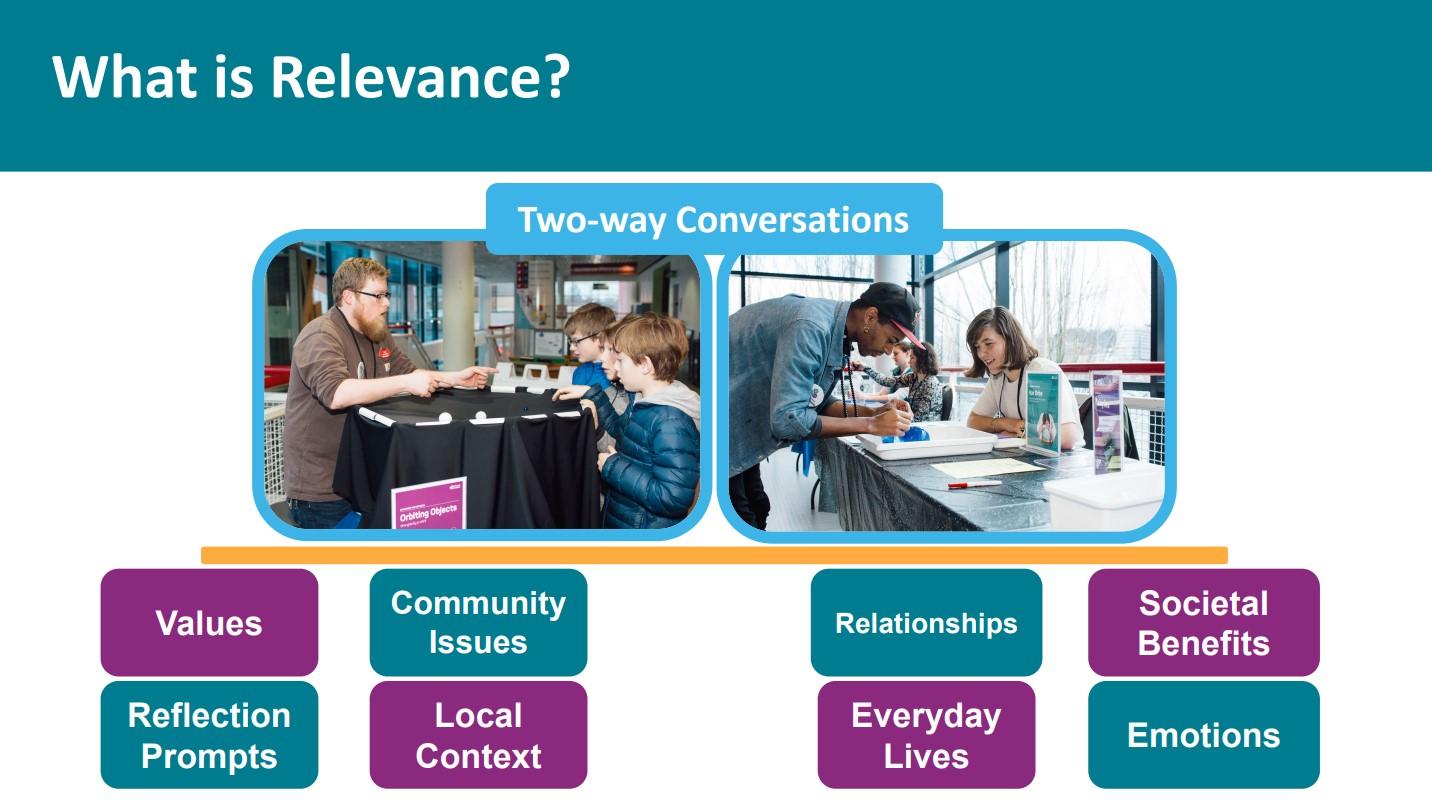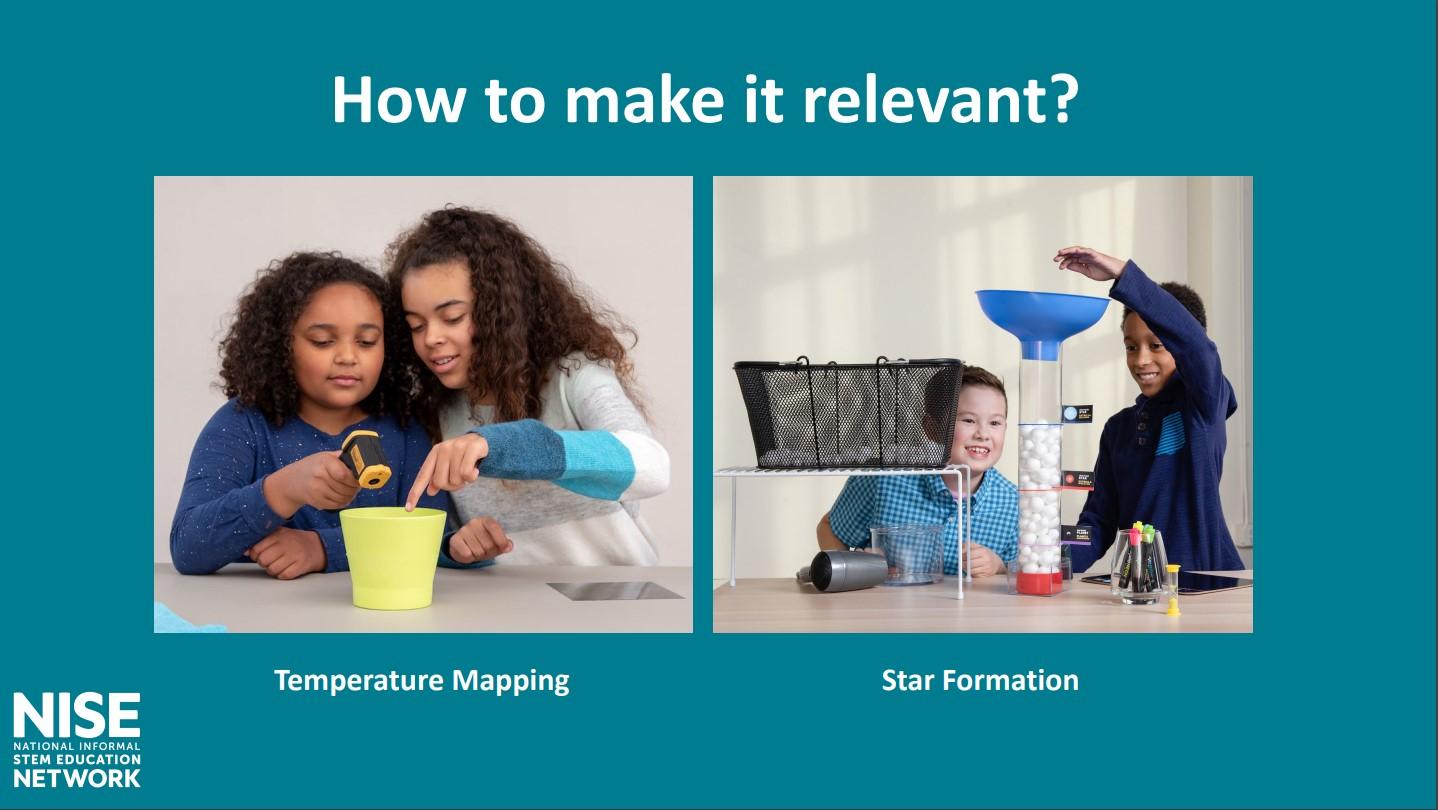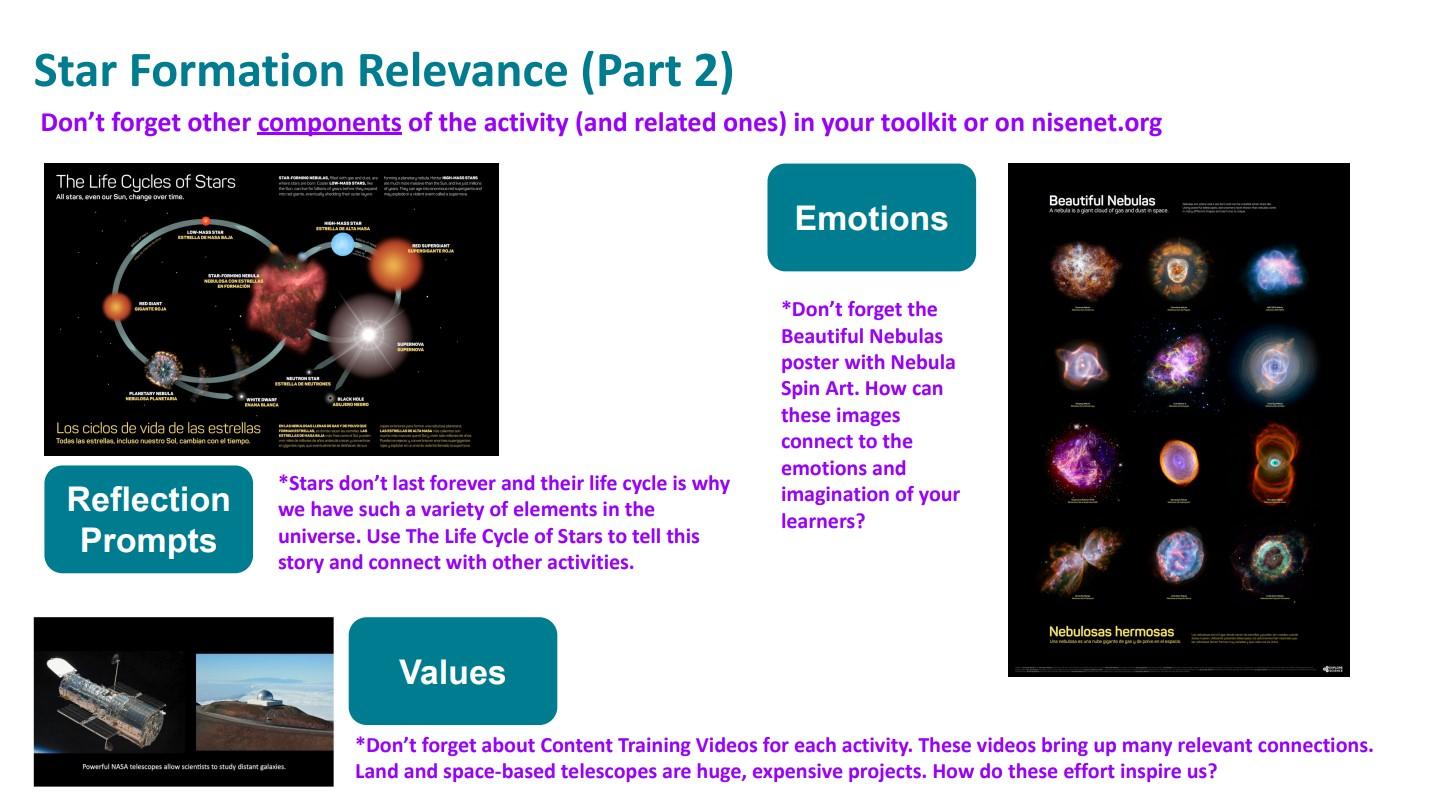DESCRIPTION
Making your program offerings more relevant to learners in your community can help create deeper engagement experiences. The guides, informational sheets, and media of the Explore Science: Earth & Space toolkit specifically address strategies to add relevance.
Starting from an initial goal of two-way conversations between facilitators and learners, the presentation here offers multiple options to build relevance during hands-on activities covering Earth & space science content. Offering opportunities to share values, providing local context and connections, and considering emotions are several strategies facilitators can use to add relevance for their learners. Strategies are then connected to specific components in two example Explore Science: Earth & Space toolkit activities.
Using the resources described here will help informal educators encourage learners to connect Earth & space science content to their everyday lives.
DESCRIPTION
Making your program offerings more relevant to learners in your community can help create deeper engagement experiences. The guides, informational sheets, and media of the Explore Science: Earth & Space toolkit specifically address strategies to add relevance.
Starting from an initial goal of two-way conversations between facilitators and learners, the presentation here offers multiple options to build relevance during hands-on activities covering Earth & space science content. Offering opportunities to share values, providing local context and connections, and considering emotions are several strategies facilitators can use to add relevance for their learners. Strategies are then connected to specific components in two example Explore Science: Earth & Space toolkit activities.
Using the resources described here will help informal educators encourage learners to connect Earth & space science content to their everyday lives.
TRAINING VIDEOS
Credits
Arizona State University
This material is based upon work supported by NASA under cooperative agreement award number NNX16AC67A and 80NSSC18M0061. Any opinions, findings, and conclusions or recommendations expressed in this material are those of the author(s) and do not necessarily reflect the view of the National Aeronautics and Space Administration (NASA).
Creative Commons Attribution Non-Commercial Share Alike 3.0 United States (CC BY-NC-SA 3.0 US).
View more details

NISE Network products are developed through an iterative collaborative process that includes scientific review, peer review, and visitor evaluation in accordance with an inclusive audiences approach. Products are designed to be easily edited and adapted for different audiences under a Creative Commons Attribution Non-Commercial Share Alike license. To learn more, visit our Development Process page.



